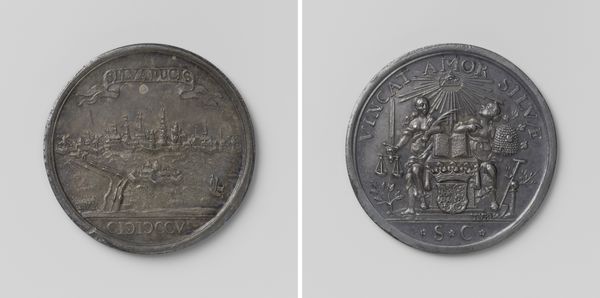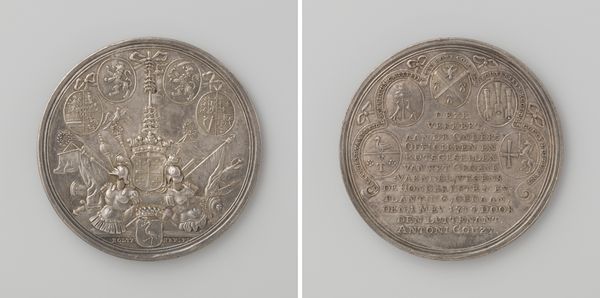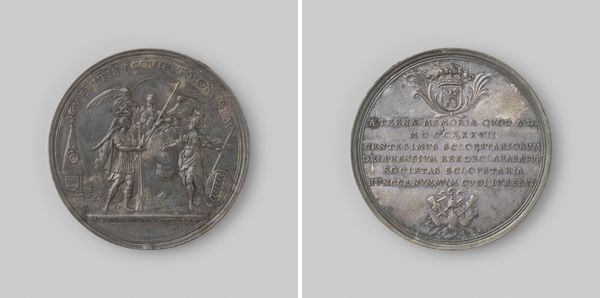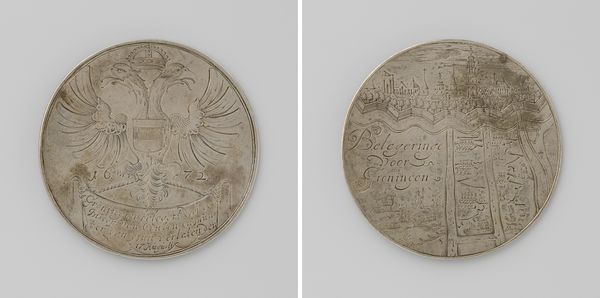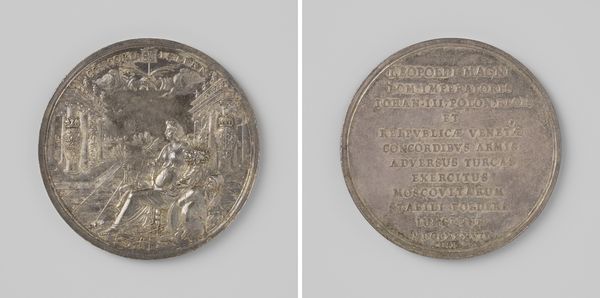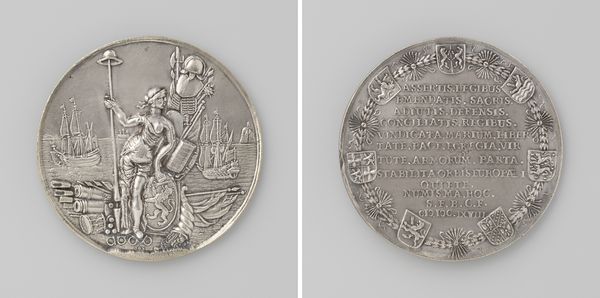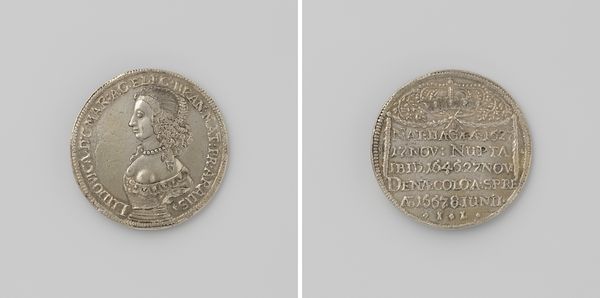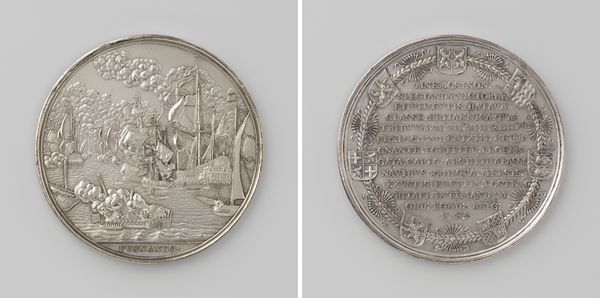
print, metal, engraving
#
baroque
# print
#
metal
#
old engraving style
#
history-painting
#
engraving
Copyright: Rijks Museum: Open Domain
Editor: This is a fascinating metal print, or rather, an engraving on metal, by Martin Holtzhey, titled "Honderdste planting van de Meiboom te 's Gravenhage" from 1734. It looks like a coin or medal, with detailed imagery on both sides. It commemorates a historical event, and I’m curious to understand what stands out to you about it? Curator: What I immediately see are the production processes and their social implications. This isn't simply about commemorating an event; it's about how the materiality of the object—the metal, the engraving—speaks to wealth, power, and commemoration. Think about the labor involved in minting and engraving. These are skilled crafts, reliant on the availability of materials and workshops. Who commissioned this? Who was meant to receive it? Editor: I see the inscription on the reverse. "Aan de onder officieren," so it was a gift to lower officers. Does the material signify anything particular in this context? Curator: Precisely. Consider the role of metal itself. Its inherent value and the act of turning it into a commemorative object elevates the ‘Honderdste planting van de Meiboom’ beyond just a ceremony; it becomes an event worthy of record and distribution, reinforcing social hierarchies. How did the act of gifting affect the dynamics? Was it to enforce loyalty? To show gratitude? It makes you wonder about its role within that specific company of officers and society as a whole. Editor: That’s interesting. It brings another layer to consider as we engage with the image and learn more about the piece. Thanks. Curator: Indeed. Analyzing the materiality forces us to consider the means of production and social dynamics intertwined in art.
Comments
No comments
Be the first to comment and join the conversation on the ultimate creative platform.
